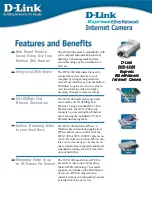
V1.02
Thom Hogan’s Complete Guide to the Nikon D300
Page 646
Note: Flash compensation does not change the background
exposure calculated by the camera.
Tip:
It’s probably best to avoid flash compensation in any of the
Balanced Fill-Flash TTL modes. You don’t know what level
of compensation the camera is already making, so any
changes you make are in addition to this unknown, camera-
calculated compensation. If you need absolute control,
switch to Manual flash mode, where any compensation you
dial in will be from a known flash level.
To Set Red-Eye Reduction
Set Red-eye reduction on the D300 by holding the Flash
Options button on the camera and turning the Rear Command
dial until
@
appears on the D300’s top LCD.
Note: Red-eye reduction works in most flash modes, but not in the
Repeating Flash mode.
SB-600 Notes
• The D300’s focus mode should usually be set to Single
Servo AF, since the flash will generally not fire unless the
camera has achieved focus.
• The Autofocus Assist light on the SB-600 is used
automatically if the ambient light is low and you haven’t
turned this function off on the flash. Autofocus assist only
works at distances from 3.3 feet (1m) up to 33 feet (10m),
and is only guaranteed to work with lenses from 24mm to
105mm.
Note: The Autofocus Assist illuminator will not function unless the
central autofocus sensor is selected or Auto Area AF is in
effect on the D300.
Note: You can turn off the Autofocus Assist illuminator on the SB-
600 by holding the
Zoom
and
+
buttons down for two
seconds and using the SB-600’s Direction pad to navigate to
the option and turn it OFF.
No AF-ILL
will appear in the
flash’s LCD.
















































